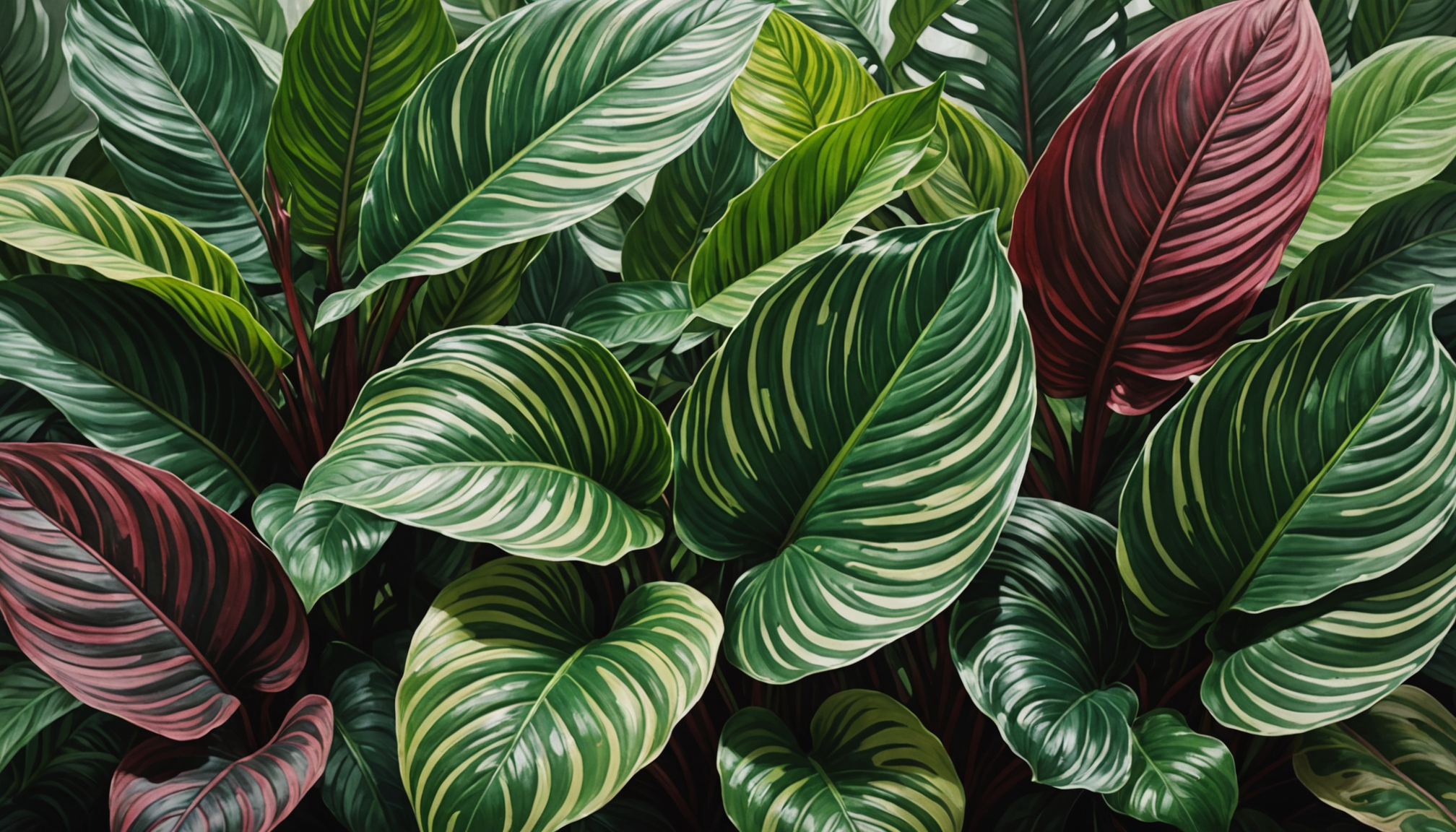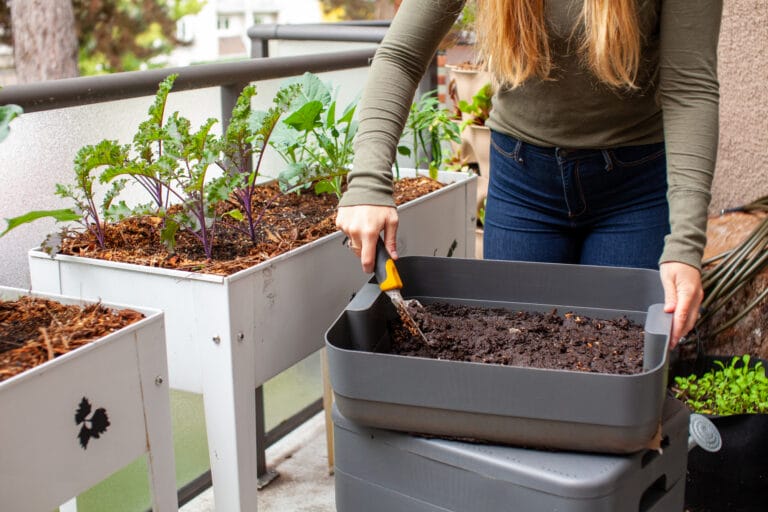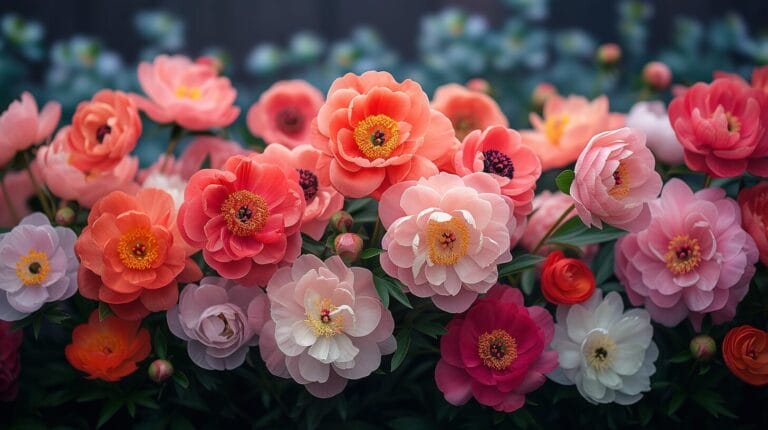Imagine stepping into a tropical paradise right in your living room! The diverse types of calathea plants offer stunning leaf patterns that dance throughout the day, moving gracefully in response to light. These living works of art, from the striking zebra plant to the elegant peacock plant, bring a touch of rainforest magic to any indoor space.
Whether you’re drawn to the bold stripes of the Calathea Ornata or the mesmerizing circular patterns of the Orbifolia, there’s a perfect variety waiting to join your plant family. But choosing the right calathea requires understanding their unique personalities and care needs. In this guide, we’ll explore the most popular varieties, share essential care tips, and help you create the perfect tropical oasis that will thrive in your home. Get ready to discover how these remarkable prayer plants can transform your space into a vibrant jungle retreat!
Types of Calathea Plants: An Overview
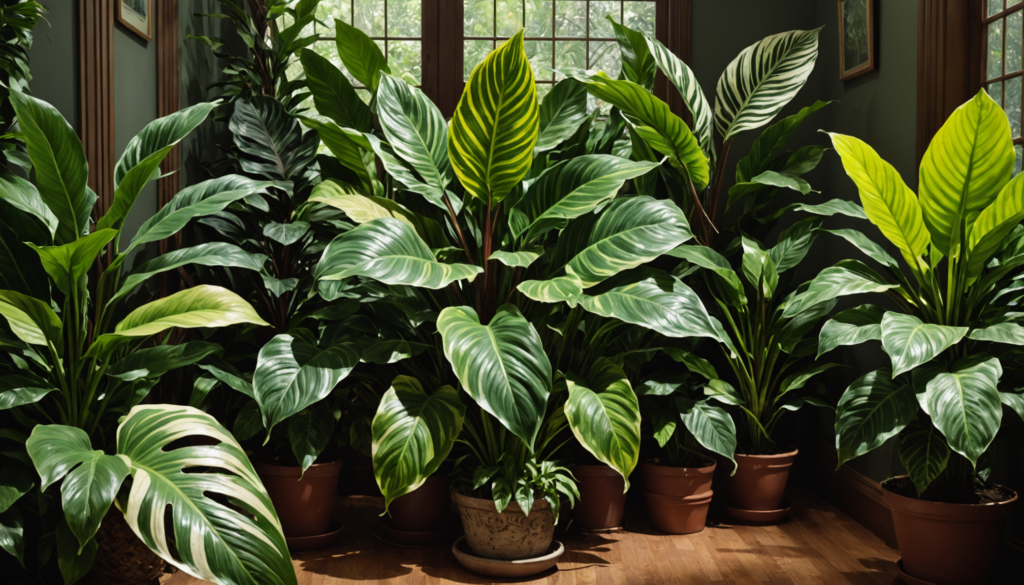
I appreciate the variety within this tropical genus. Many types of Calathea plant, often referred to as prayer plants, feature vibrant leaf patterns and intriguing daily leaf movements. According to Wikipedia, there are over 60 recognized Calathea species.
What Are Calathea Plants?
Calathea is part of a group of perennials in the Marantaceae family. They grow in tropical rainforests across Central and South America, where they thrive under warm and humid conditions. Their leaves often show dark green stripes, feather-like patterns, or bright undersides that fold at night.
Characteristics of Different Calathea Varieties
I see that most Calathea varieties share several core traits. They have clumping growth habits, leaf coloration with distinctive stripes or spots, and a typical height of 6 inches to 3 feet. Many display high humidity needs and prefer moist soil with indirect sunlight.
| Variety | Leaf Pattern | Special Features |
|---|---|---|
| Calathea orbifolia | Silver-green stripes | Large, round leaves |
| Calathea makoyana | Feather-like marks | Purple undersides, known as Peacock Plant |
| Calathea roseopicta | Pink and green | Rose-tinted new growth |
Popular Calathea Varieties and Their Unique Features
Calathea orbifolia stands out for its broad, striped leaves. Calathea makoyana, also called the Peacock Plant, has striking feather patterns and maroon undersides of the leaves. Calathea roseopicta showcases pink accents on emerging foliage. In addition to these captivating houseplants, gardeners often seek to create vibrant landscapes by incorporating purple flowering tree varieties, which add a stunning contrast against the lush greenery of Calatheas. The bold hues of these trees not only enhance the aesthetic appeal of outdoor spaces but also provide a lovely backdrop for the intricate patterns of Calathea leaves. Together, they create a harmonious blend of colors and textures that can elevate any garden design.
Understanding Calathea Growth Patterns
Most calatheas form upright clusters and grow from short rhizomes. They adapt to partial shade in their native habitat but can handle bright, indirect light indoors. Their leaf markings often become more vibrant with consistent humidity and proper watering.
Detailed Exploration of Calathea Varieties

Calathea Orbifolia: The Iconic Beauty
I admire Calathea orbifolia for its large, round leaves with silver and green stripes. It grows up to three feet tall and wide when humidity stays near 60%. Each leaf looks like a painted masterpiece, showcasing bold stripes that catch the eye. I notice it thrives with indirect light and regular misting.
Key characteristics include:
• Round leaves, typically 8-12 inches in diameter
• Bands of silvery-white contrasted with deep green
• Smooth, matte surfaces that reflect minimal glare
• Upright growth that forms a neat arrangement
Calathea Setosa: Texture and Contrast
I see distinct textures in the narrow leaves of Calathea setosa, also called Goeppertia setosa. The top appears dark green, while the undersides of the leaves display a purple hue. This smaller type of calathea plant reaches about 1-2 feet high and prefers regular watering in moist soil. It moves its leaves throughout the day, which adds to its charm.
Calathea Loeseneri and Its Unique Patterns
Calathea loeseneri, native to Brazilian rainforests, has lance-shaped leaves edged with pale silver markings. I spot intricate feather-like patterns on each leaf, and it stays medium-sized, which fits well on shelves or tables. It benefits from bright shade and high humidity to safeguard its delicate foliage.
Rare and Exotic Calathea Varieties
Some rare calathea species fascinate me with their decorative foliage. Calathea musaica, for instance, showcases a geometric network across green leaves, while Calathea roseopicta ‘Dottie’ features deep maroon undersides and vibrant pink edges. Calathea warscewiczii has velvety leaves with bold stripes. These rarer types of calathea plant also share a preference for humidity above 60%.
| Variety Name | Distinctive Features | Size Range |
|---|---|---|
| Calathea musaica | Network-like leaf patterns | 1-2 feet |
| C. roseopicta ‘Dottie’ | Deep purple leaves with pink edges | 1-1.5 feet |
| C. warscewiczii | Velvety texture with dark patterns | 2-3 feet |
I keep humidity near 60%, provide indirect light, and maintain moderate temperatures for these tropical beauties. Consistent warmth and filtered sunlight help these plants thrive indoors.
Caring for My Calathea Plants
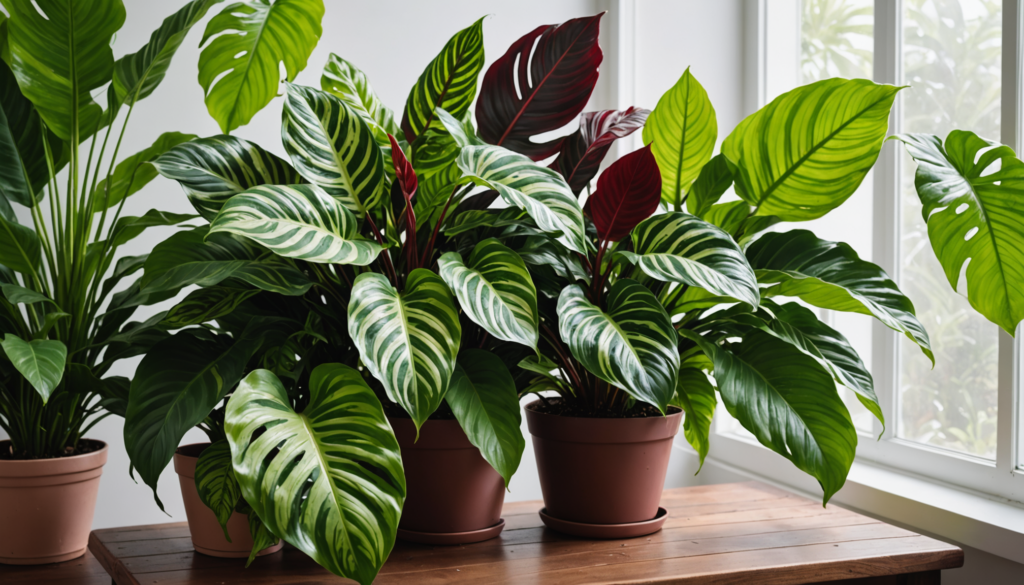
Essential Care Tips for Calathea Varieties
I keep these tropical wonders, often referred to as prayer plants, where they receive bright indirect light. Direct sunlight can scorch leaf patterns, so a spot near a north or east-facing window feels safe. Temperatures around 65-80°F (18-27°C) encourage strong growth, and I avoid cold drafts to protect their decorative foliage. I also watch for leaf curling, which may signal stress or sudden changes in environment.
Our House Plants |
Hortology
Watering and Humidity Needs for Calathea
I use filtered or distilled water to avoid harmful minerals that can burn edges on these calatheas. Moist soil is key, so I water when the top inch feels dry, but I never let the soil get soggy. Humidity stays above 60% with regular misting or humidity trays. Tall tropical calathea species, like the rattlesnake plant and zebra plant, appreciate grouping with other houseplants for consistent moisture.
BBC Gardeners’ World |
Plant Care Today
Soil and Fertilization for Optimal Growth
I blend 50% regular potting soil, 20% orchid bark, 20% charcoal, and 10% perlite to ensure good drainage. This mix keeps roots healthy while holding enough moisture for their broad leaves. During spring and summer, I fertilize monthly with a balanced, water-soluble formula at half strength. These calathea varieties thrive with gentle feeding, especially ornamental types like calathea ornata and peacock plant. In addition to nurturing calatheas, I enjoy the challenge of growing vanilla from seeds, which requires a similar attention to soil quality and moisture levels. This process demands patience, as these seeds can take several months to germinate, yet the reward of cultivating my own vanilla beans is well worth the effort. As I care for both plants, I find that the principles of proper drainage and feeding remain key to their success.
Seasonal Care Requirements
In spring and summer, I boost watering frequency and maintain higher humidity. Calathea leaves often look more vibrant during active growth, so I watch for any drying edges or discoloration. In cooler seasons, less frequent watering and minimal fertilization help these prayer plants hold steady. I keep temperatures stable throughout the year and shield them from harsh drafts or sudden climate changes.
Common Misconceptions About Types of Calathea
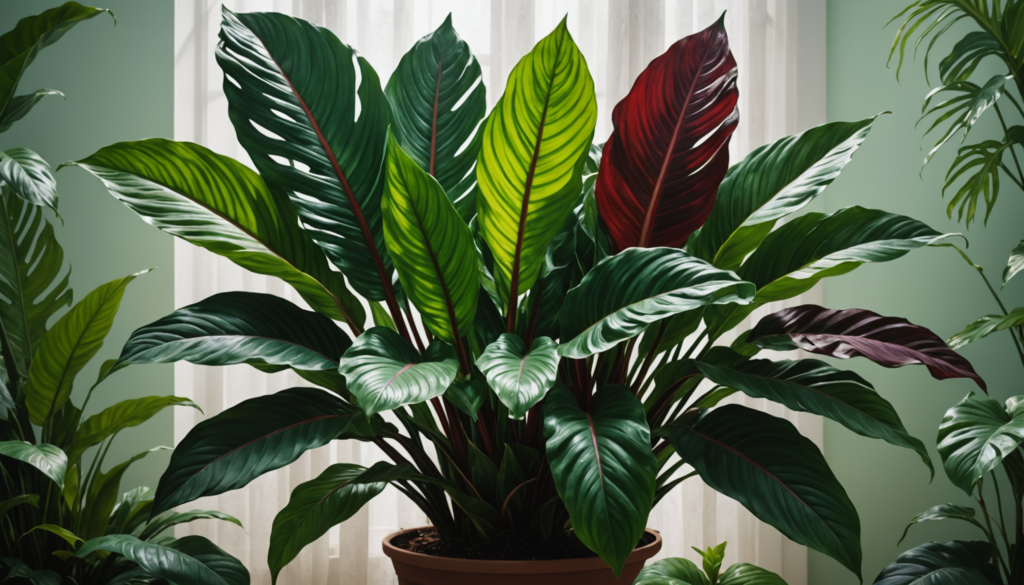
Are All Calathea Plants Hard to Care For?
Many types of Calathea plant have specific needs, but not every variety poses a challenge. Calathea makoyana and the zebra plant show forgiving growth habits in average indoor settings. Each plant displays distinct leaf patterns that often thrive with indirect light and moderate watering. Comparative research reveals that proper humidity and stable temperature further improve success rates.
| Variety | Care Difficulty | Light Tolerance | Humidity Needs |
|---|---|---|---|
| Orbifolia | Moderate | Low-Medium | High |
| Zebrina | Easy | Medium | Medium |
| Makoyana | Easy | Low-High | Medium |
| Ornata | Challenging | Medium | High |
Understanding the Foliage: What Does It Really Mean?
Many calatheas, also known as prayer plants, fold their leaves up and down in response to light changes. This movement, called nyctinasty, reflects the plant’s internal rhythm and does not signal distress. Some species, such as Calathea roseopicta, show colorful undersides that accent these motions. Researchers note that leaf movement helps manage moisture and temperature in tropical habitats.
Debunking Myths Surrounding Calathea Varieties
Certain beliefs, like “brown leaf tips always mean poor care,” overlook natural aging. Calathea ornata and rattlesnake plant may develop slight browning without serious issues. Other myths claim that all calatheas demand extreme humidity. In reality, some pinstripe plant varieties adapt well to moderate indoor climates. Additionally, it’s important to understand that proper care for houseplants can vary widely among species, and observing specific needs can help ensure their health. For instance, when to plant strawberries in Georgia generally aligns with the optimal climate conditions that favor their growth, mirroring how some houseplants thrive in environments different from the common myths that surround them. By educating yourself about these nuances, you can cultivate both your houseplants and garden more effectively.
Scientific Research on Calathea Care
Studies show that most plants in the Calathea genus prefer 60–80% humidity and temperatures around 65–80°F (18–27°C). Many calathea species need indirect light to protect their dark green or striped leaves from sun scorch. Researchers also report that overwatering causes more problems than slight dryness. Soil rich in organic matter supports steady growth.
Expert Recommendations for Choosing Calathea Varieties
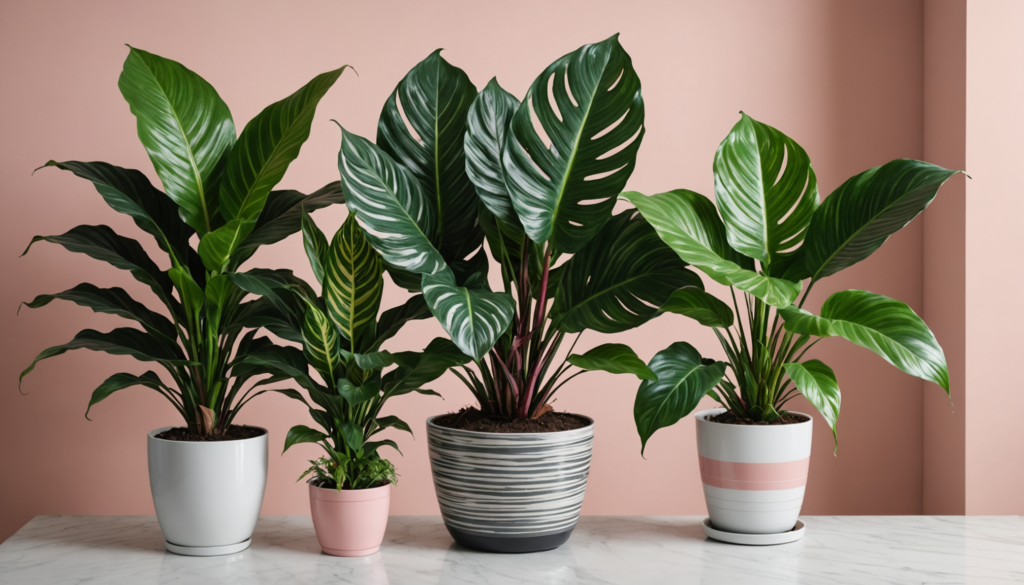
Factors to Consider When Selecting Types of Calathea
I evaluate light, humidity, and space before choosing any types of Calathea plant. Many varieties thrive in bright but indirect light, which protects their vibrant leaf patterns from scorching. I also keep humidity around 60% or above because these tropical prayer plant species need consistent moisture in the air. Larger types, such as Calathea orbifolia, often grow up to three feet tall and may need more room.
| Variety | Mature Height | Spread | Space Needs |
|---|---|---|---|
| Orbifolia | 2-3 feet | 2 feet | Large |
| Makoyana | 1-2 feet | 1 foot | Medium |
| Setosa | 6-12 inches | 8 inches | Small |
Suggested Calathea Varieties for Beginners
I often suggest Calathea makoyana, also called the Peacock Plant, because it signals stress by drooping leaves and bounces back quickly. Calathea orbifolia adapts well to moderate humidity changes and grows at a slower pace, so regular trimming is minimal. Both varieties handle indirect light and moderate watering schedules without protest.
Personalizing Your Calathea Collection: Tips and Tricks
I start small and pick one beginner-friendly Calathea, then add new varieties as I feel comfortable. Certain species, like Calathea ornata, demand higher humidity and require frequent misting for those who enjoy detailed care. I match each plant’s needs with the available environment, making sure there is enough indirect light and warmth for every leaf to thrive. As I expand my collection, I also enjoy learning about different gardening topics to enhance my overall skills. For instance, I’ve been researching when to plant potatoes in 2024 to incorporate edible gardening into my routine. This knowledge not only diversifies my gardening experience but also helps me create a more vibrant and productive outdoor space.
Professional Growing Techniques
I rely on filtered or distilled water and avoid direct sunlight, which burns the gorgeous green leaves. Temperatures stay between 65°F and 80°F, and I use potting mix with perlite and orchid bark for proper drainage. Consistent misting or a nearby humidifier maintains the humidity required by many Calathea species. I also watch for daily leaf movements, since healthy Calatheas often fold and unfold their foliage in a prayer-like motion.
Troubleshooting Common Calathea Issues

Identifying and Treating Plant Problems
Many types of calathea plant, including the pinstripe plant and rattlesnake plant, show distinct leaf patterns that hint at early problems. Leaf curling often happens with low humidity. Brown edges can signal mineral buildup from hard water or heavy feeding. Yellow leaves often mean soil stays too wet, and faded stripes may point to intense sunlight.
Each issue has a simple fix: raise humidity with a humidifier, use filtered water, reduce watering, or move the plant to indirect light. Quick actions can prevent lasting harm.
| Symptom | Cause | Solution |
|---|---|---|
| Curling leaves | Low humidity | Add humidifier |
| Brown edges | Hard water | Use filtered water |
| Yellow leaves | Overwatering | Reduce watering |
| Faded patterns | Excess light | Move to indirect light |
Prevention Strategies for Optimal Growth
Most calathea species thrive with moderate moisture and warm, draft-free conditions. The top inch of soil should feel slightly dry before watering again. Maintaining 65–80°F and at least 50% humidity mirrors the marantaceae family’s tropical habitat. Many types of calathea plant enjoy bright but indirect light, which protects their striking leaf patterns from scorch.
Weekly leaf checks detect spider mites or other pests early. Monthly leaf cleaning also helps keep the foliage vibrant.
When to Seek Expert Help
Persistent decline may require professional advice, especially for rare calathea varieties like calathea crocata or roseopicta. Rapid leaf drop, mushy stems, or spreading pests can indicate a deeper issue. If the plant fails to show improvement after proper adjustments, expert insight is essential. Some horticulturists offer advanced guidance for complex problems.
Conclusion
Calathea plants are truly remarkable additions to any indoor garden, with their stunning leaf patterns and diverse varieties like the Orbifolia, Setosa, and Medallion. While these tropical beauties may seem challenging at first, understanding their basic needs for humidity, indirect light, and proper watering can help them thrive in your home environment.
With the right care and attention, these prayer plants will reward you with their unique daily leaf movements and eye-catching foliage. Whether you’re starting with beginner-friendly varieties or exploring more exotic options, there’s a perfect Calathea for every plant enthusiast. As you continue your plant journey, remember that each variety brings its own special charm and character to your growing collection.
FAQs
1. How many types of Calathea plants exist?
There are over 60 known Calathea species in cultivation, and botanists reclassify new ones regularly. Popular examples include the Peacock Plant (Calathea makoyana), Pinstripe Plant (Calathea ornata), and Rattlesnake Plant (Calathea lancifolia).
2. Which Calathea variety is best for beginners?
Calathea ornata, Calathea makoyana, and Calathea roseopicta ‘Medallion’ respond well to indoor conditions. I find that these forgiving varieties adapt to moderate humidity levels and display gorgeous striped foliage. Each one remains fairly resilient when given proper light and moisture.
3. How often should I water my Calathea?
I water these houseplants when the top 1–2 inches of soil feel dry, usually every 7–10 days. Seasonal and indoor climate changes affect the exact interval. Consistent moisture prevents drooping, but excess water may cause root issues.
4. Why do Calathea leaves curl?
Curling signals stress, often from low humidity, underwatering, temperature swings, or harsh light. I maintain at least 60% humidity and keep these tropical plants in stable conditions. This approach preserves their vibrant leaves and prevents curling.
5. Can Calathea plants thrive in low light?
Many Calathea species handle medium to low indirect light. Direct sunlight is risky because it can scorch leaves. North or east-facing windows work well, especially if light passes through sheer curtains.
| Light Level | Water Needs | Humidity Range |
|---|---|---|
| Low to Medium Indirect | When top 1–2″ dry | 60%+ |
| No direct sun | 7–10 day cycle | Higher is better |
| Filtered bright light | Less in winter | Mist if needed |

